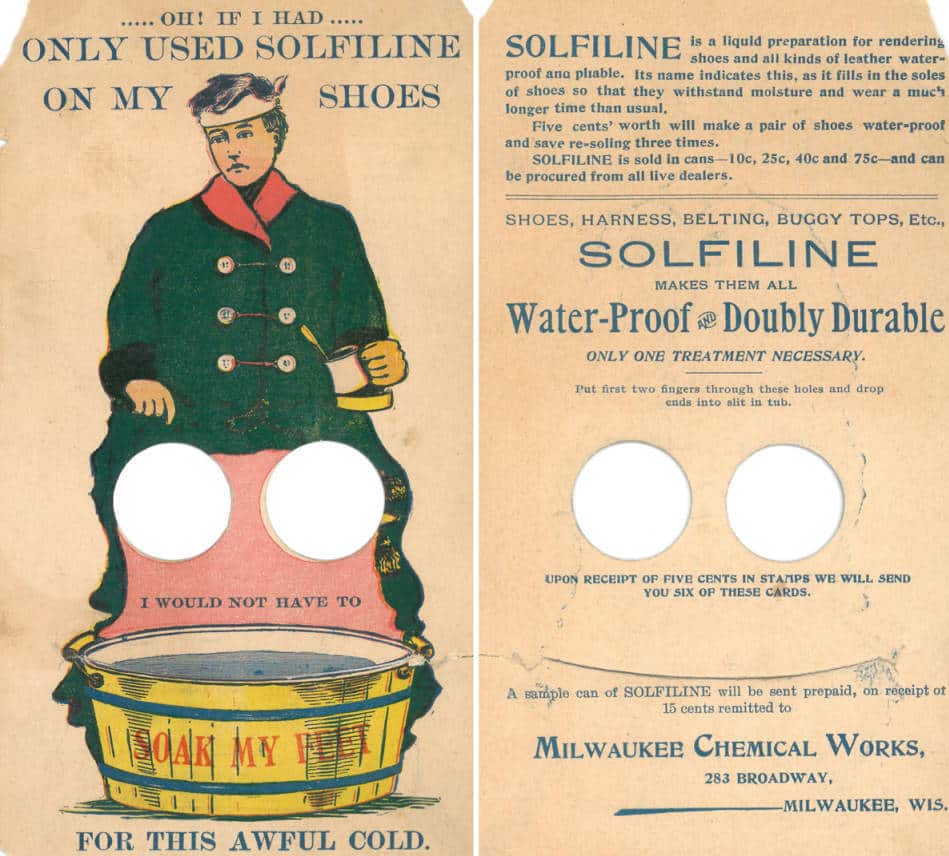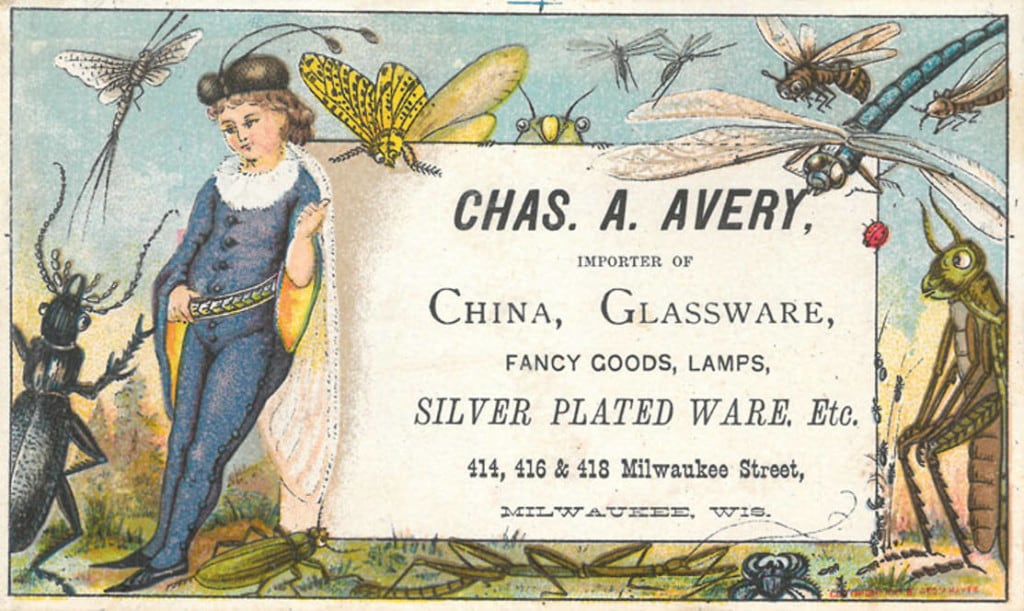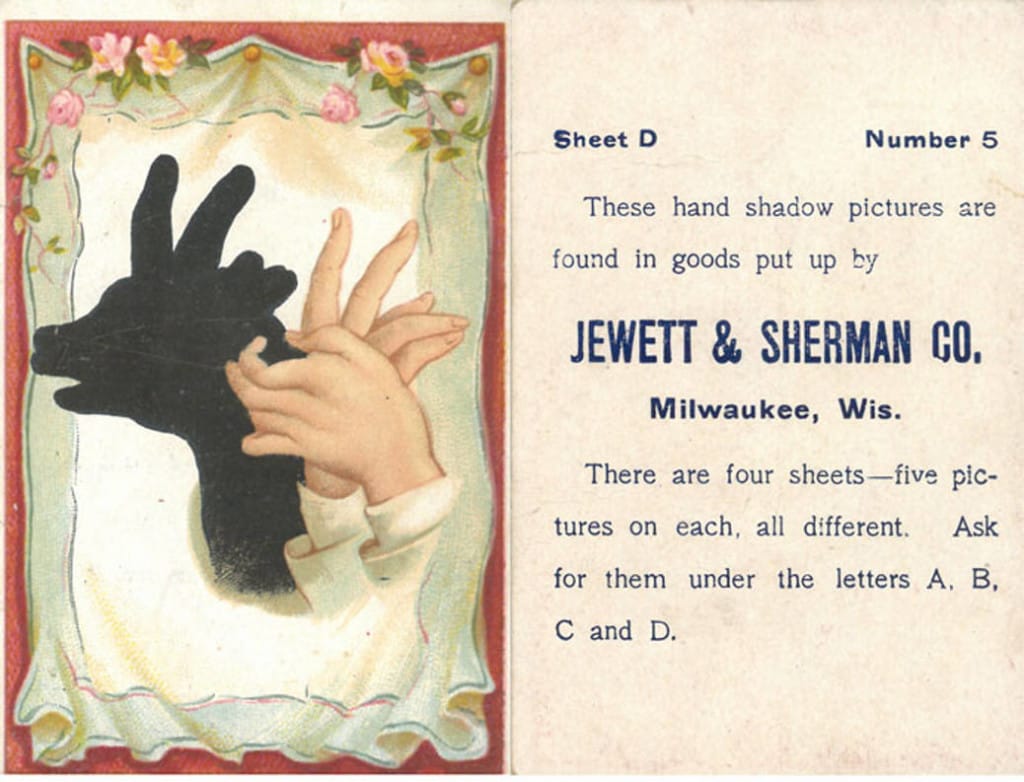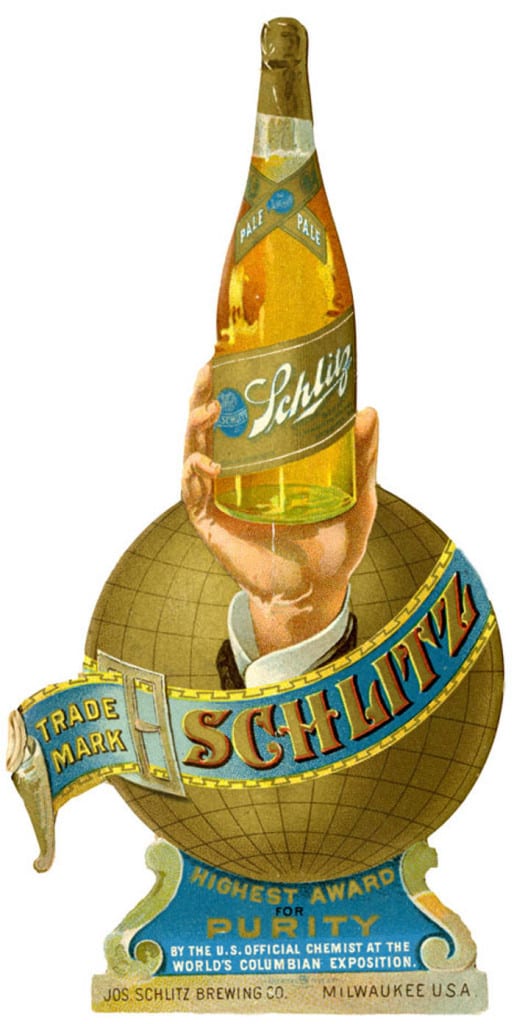In the late nineteenth century, one of the most prevalent and eye-catching forms of advertising could fit easily in your pocket: the trade card. Retailers and manufacturers distributed small printed cards, known as trade cards or advertising cards, to shoppers along with packaged goods such as soap and medicines. Printers took advantage of the newly developed chromolithography process to make trade cards brilliantly colorful. This made the cards highly appealing to customers, many of whom took up the hobby of collecting cards and pasting them in scrapbooks.
The Milwaukee Public Library has recently brought online a collection of hundreds of trade cards distributed by Milwaukee businesses in the late 1800s. This extraordinary collection, housed in the Library’s Richard E. and Lucile Krug Rare Books Room, provides a snapshot of the kinds of goods and services offered locally in this period as well as the creative approaches businesses once used to market their wares. Many cards in the collection are “stock” cards — pre-printed images with an empty space where the merchant could stamp his name and address, such as the card for Avery’s China Parlors illustrated below. Other cards were more elaborate custom prints for individual businesses, like the die-cut card for Schlitz Brewing Company, also below.
Digitization of the Milwaukee Historic Trade Card Collection was made possible through Library Services and Technology Act (LSTA) funds awarded to the Wisconsin Department of Public Instruction by the Federal Institute of Museum and Library Services.




Explore the Milwaukee Historic Trade Card Collection.
Further reading
- 19th Century American Trade Cards, Boston Public Library.
- Margaret Hale, “A New and Wonderful Invention: The Nineteenth-Century American Trade Card,” Working Knowledge (Harvard Business School, September 2000).
- The Art of American Advertising 1865-1910, Baker Library, Harvard Business School.
- Robert Jay, The Trade Card in Nineteenth-Century America. Columbia: University of Missouri Press, 1987.




You must be logged in to post a comment.